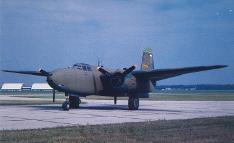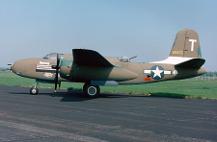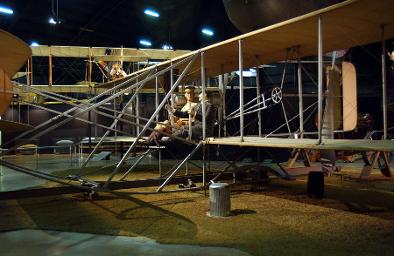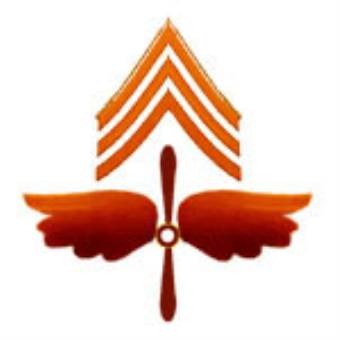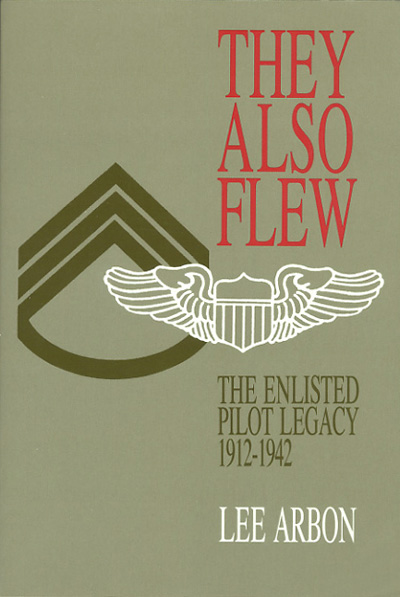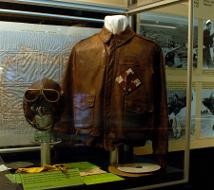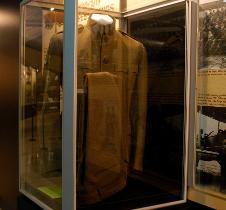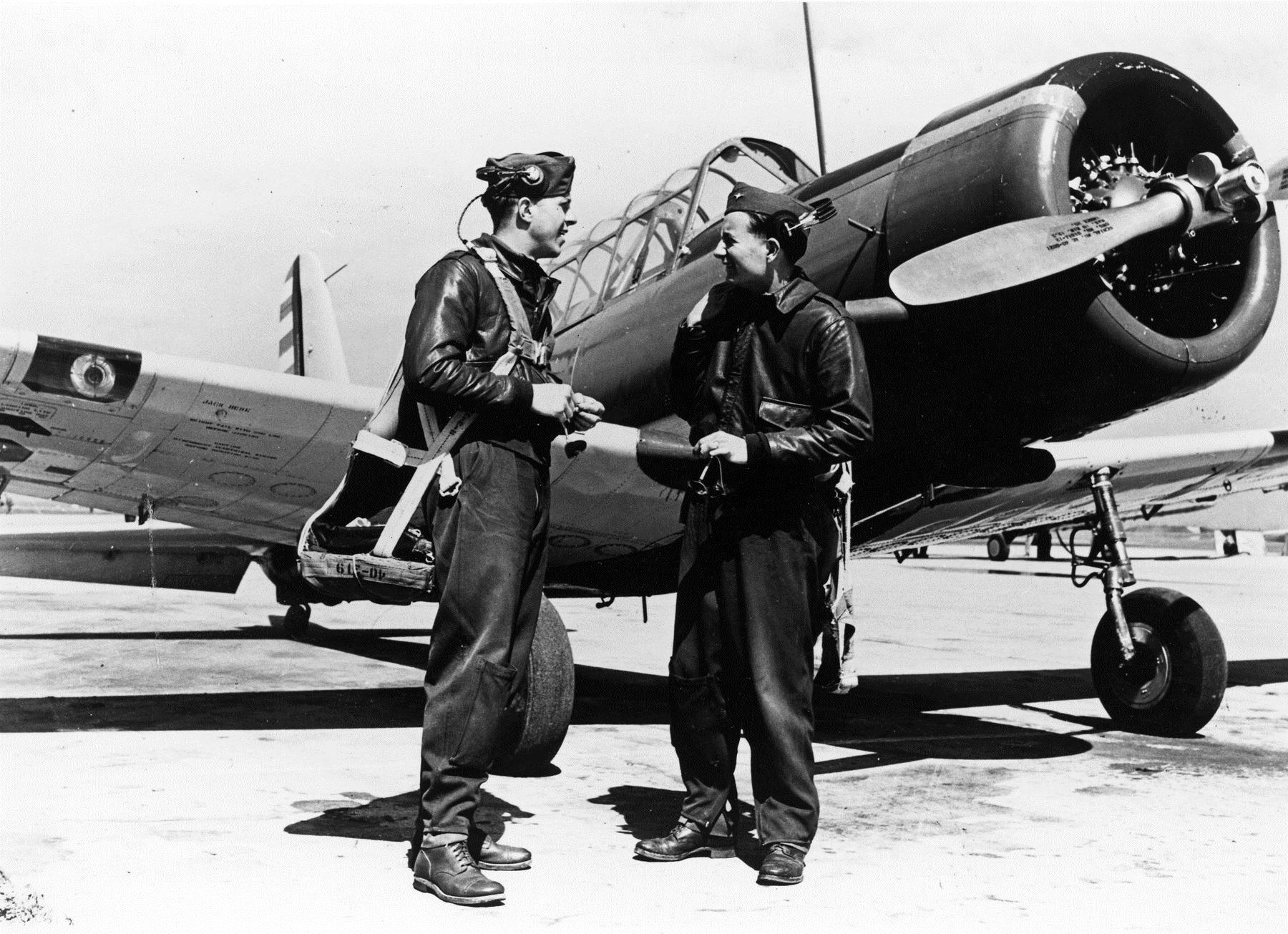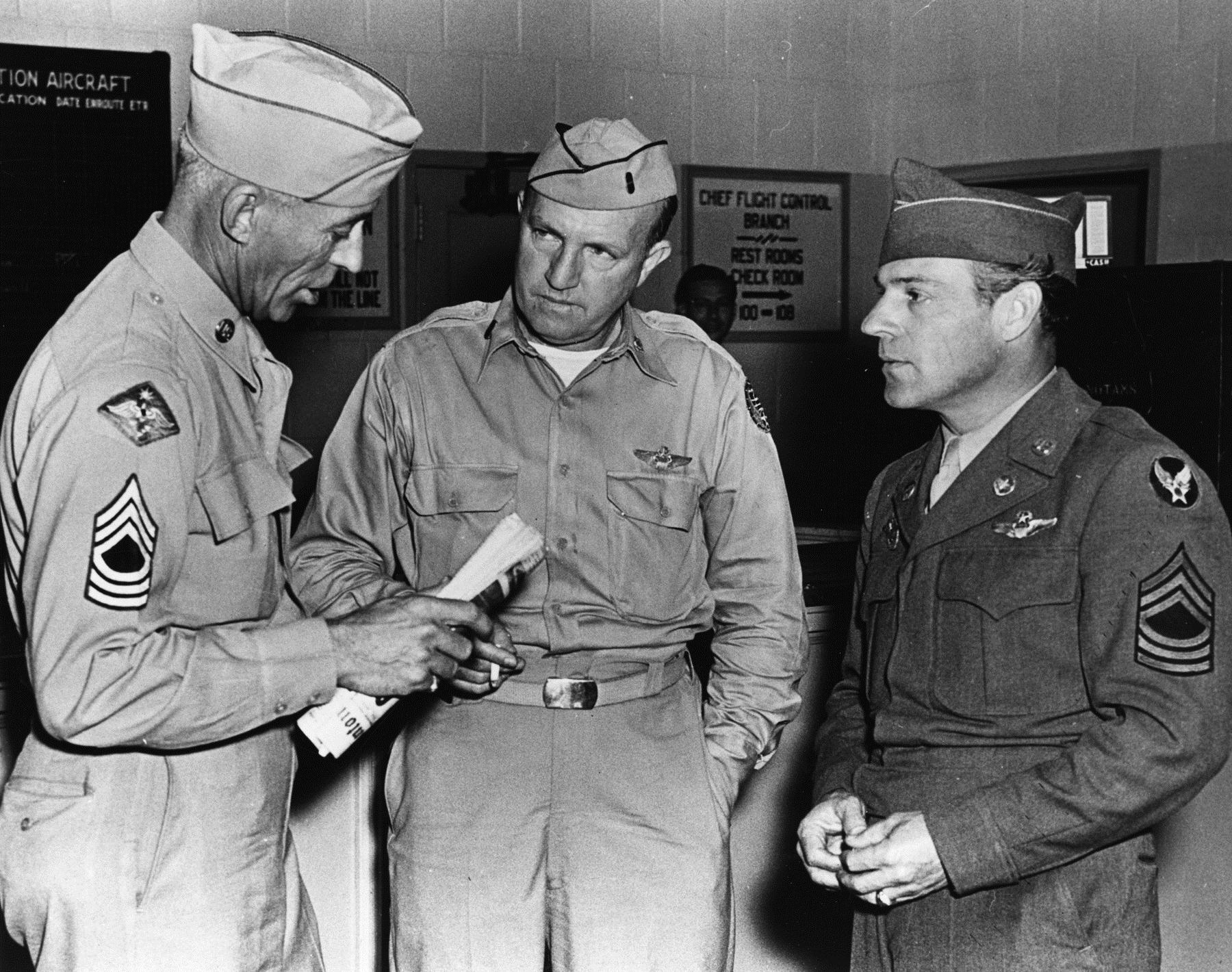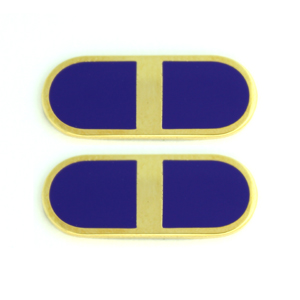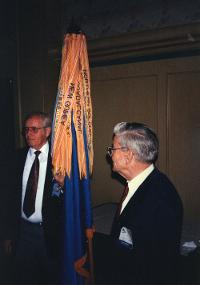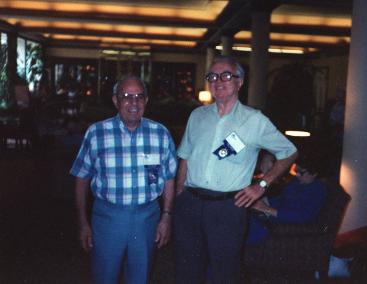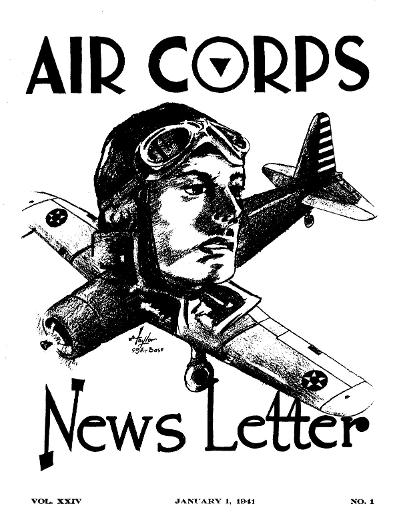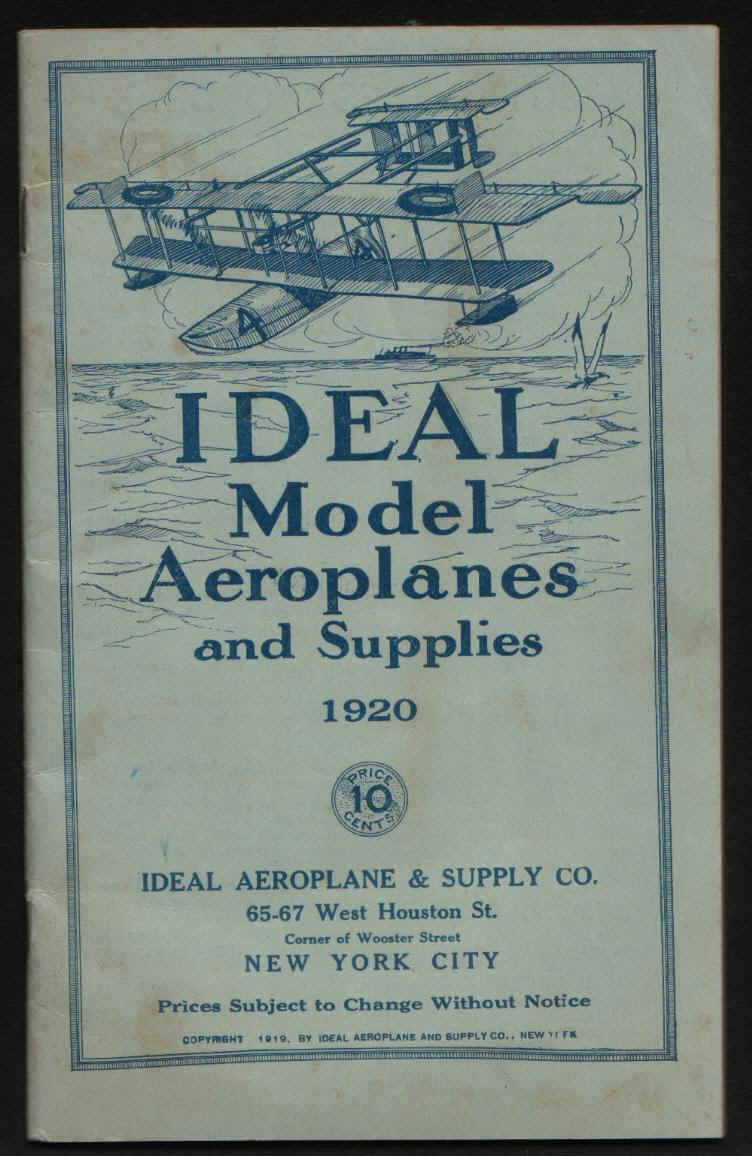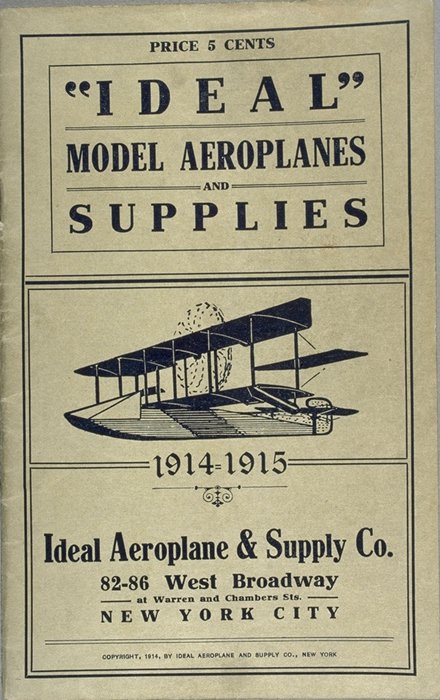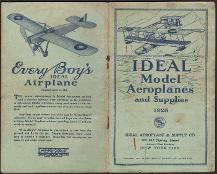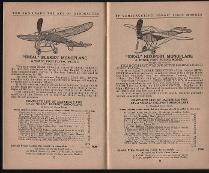A-20G AT THE NATIONAL MUSEUM OF THE AIR FORCE
A few months back I was asked a question by Robert L. Mosley ( Lt Col.
USAF Ret. ) regarding the A-20G at the Air Force Museum. When he was
attending the 89th Attack Squadron Reunion in 1990, the aircraft showed
on the tip of the vertical stabilizer the green marking of the 89th
Attack Squadron which Bob served with during WWII. The A-20G is now
painted as an aircraft of the 312th Bomb Group. He was curious as to
when the aircraft was repainted. This led me to contact Dr. Jeff
Underwood, the historian at the museum concerning the paint job. Here is
his reply:
Gerry and Robert,
As we discussed on the phone, I was not here when the decision was made to repaint our A-20G. We’ve done some research, and in 1961 the Bankers Life and Casualty Co. of Chicago donated this A-20G to the Museum. In 1979, it was painted to represent an aircraft with the 89th. Why that unit was chosen is unknown. Apparently, a number of individuals from various organizations made continued requests to have the aircraft repainted – each of them seems to have offered different recommendations. In 1997, the Museum Director decided to paint the aircraft as a 312th Bomb Group, 389th Bomb Squadron. We have no record of why that paint was chosen.
I hope this information helps. From my personal, unscientific observations, the A-20G and its surrounding diorama attracts the attention of many visitors.
Best wishes,
Jeff
Jeffery S. Underwood, Ph.D.
National Museum of the US Air Force Historian
NMUSAF/MUA
1100 Spaatz Street
Wright-Patterson AFB OH 45433-7102
A-20G - NATIONAL MUSEUM OF THE AIR FORCE
Courtesy of Col. Les Shrum USAF Ret.
THE VETERAN
"OUR COUNTRY IS IN MOURNING,
ENLISTED PILOTS
Lee Arbon
They Also Flew
The Enlisted Pilot Legacy, 1912-1942
ISBN 1-56098-837-1
While the history of the United States Air Force as a separate and independent component of the Department of Defense did not officially begin until September 1947, its roots went back to August 1907, when its parent, the Army, began to concern itself with aeronautics.
Understandably proud of its new status, the Air Force had to look to its future. Only recently has it begun to reflect on its earlier, humbler beginnings-beginnings that included a small number of enlisted pilots.
Those of us who served their nation as enlisted pilots, even if for a little while, have found it humbling to learn that few ever knew we served. When the term enlisted pilot, or sergeant pilot, is introduced into any appropriate conversation today, and draws only a blank response, an accounting seems overdue.
I have undertaken this writing to place the legacy of this small number of pilots into the literature, and to inform its readers that from 1912 to 1942 enlisted pilots also flew.
I have chosen to use the terms aeroplane and airplane in their contemporary context, that is, aeroplane, 1903-17, and airplane, 1917-42.
A caveat in closing: Since I am neither a writer nor a historian, my reconstruction of the sergeant pilot story, drawn from documents forty-five to eighty-two years old as well as from the recollections of individuals years after the events, is bound to be flawed by time and bias. It is, however, as careful and honest an account as I can construct. Readers who discover such flaws would do this account a favor by bringing them to the author's attention. -Lee Arbon
Source: http://www.b26.com/page/they_also_flew.htm
Obituary: http://www.legacy.com/obituaries/statesman/obituary.aspx?page=lifestory&pid=152042957
The sergeant pilot training program ended in late 1942 since the educational requirement for cadets had been lowered to that for an aviation student (high school diploma) and all students were to be appointed at graduation as flight officers or second lieutenants. The promotion of those pilots still sergeants was ordered on Nov. 17, 1942, but promotions didn't catch up with
all sergeant pilots who were overseas until 1944. Eventually, nearly all became second lieutenants. Not wanting to be mistaken as unblooded new pilots, some of these combat veterans scoured their new gold bars with dirt until they resembled those of first lieutenants. (In World War II, AAF regulations also provided for enlisted glider pilot and enlisted service pilot, but generally such pilots were flight officers or above.)
FLIGHT OFFICERS
FLIGHT OFFICERS SERVING WITH 3RD BOMBARDMENT GROUP (L) 1942-1945
F/O Hobart R. Rankin - 8th
F/O Abraham E. Shook - 8th
F/O Dwight E. Turner - 8th
F/O Harvey O. Truesdale - 89th
F/O William R. Shrum - 8th
F/O Jack K. Harrington - 90th *
F/O Horace B. Monroe - 90th *
F/O Jay I. Shoop - 90th
F/O Harold R. Prince - 90th
F/O Urban L. Arens - 90th
F/O William O. Ruse - 90th
F/O Kenneth R. Ladd - 90th
F/O Bruce R. Bell - 89th
* Both of these officers were enlisted men based in Hawaii prior to December 7, 1941.
They both became classmates along with Dwight E. Turner at Hancock College of Aeronautics
and became Flight Officers and subsequently Lts. with the 90th Squadron while Dwight Turner (Major USAF Ret.)
was assigned to the 8th Squadron.
The Flight Officer's Act was signed into law until November 1942, it appears that Flight Officers were assigned to the 90th BS 3rd BG in May 1943.
ENLISTED PILOTS 1942 50 YEAR REUNION 1992
